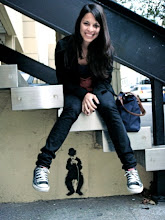Given the
fact that one of the elements that attract me the most about films is the cinematography,
I’ll start this paper talking exactly about that. Gordon Willis’ cinematography
in Manhattan is spotless and beautiful;
it certainly takes this Woody Allen’s film to a different level. The control of
lighting and camera work are impeccable, perhaps even perfect.
In terms of lighting, Willis tends to alternate high contrast with soft lighting and predominantly black scenes with white scenes. The use of provocative lighting is mostly obvious during the planetarium scene. Here, the characters acquire a cartoonish quality given the strong backlight. In addition, the characters seem to become inhabitants of the moon thanks to the lighting. They amalgamate effortlessly to this new word. They walk through the cracks of the moon just like Melies’ explorers in A Trip to the Moon.
In terms of camera movement, we only get pans and dollies, nothing exorbitant. However, it is interesting to notice the use of unusual framings. Willis tends to have wide shots in which crucial action happens in the corners of the frame. Therefore, the audience is given the opportunity to choose where to focus and pay attention to. Willis also uses this kind of composition to show parallel actions. He does so by using multiple points of light in wide shots, separating and isolating characters from each other.
It is interesting to notice that most of Woody Allen’s films do not follow the classical elements taught in screenwriting courses. ‘The character most change by the end of the film,” professors repeat incessantly, insisting this is the secret of any good film. However, in Manhattan, like in many other Woody Allen’s films, the characters, after going through a great deal of chaotic circumstances, wind up at the exact same spot where they started. In the case of Manhattan, Isaac tries to get back with Tracy, and Mary continues her affair with Yale. Not following the rules has worked out well for Woody Allen, whose work is considered brilliant worldwide.
In terms of lighting, Willis tends to alternate high contrast with soft lighting and predominantly black scenes with white scenes. The use of provocative lighting is mostly obvious during the planetarium scene. Here, the characters acquire a cartoonish quality given the strong backlight. In addition, the characters seem to become inhabitants of the moon thanks to the lighting. They amalgamate effortlessly to this new word. They walk through the cracks of the moon just like Melies’ explorers in A Trip to the Moon.
In terms of camera movement, we only get pans and dollies, nothing exorbitant. However, it is interesting to notice the use of unusual framings. Willis tends to have wide shots in which crucial action happens in the corners of the frame. Therefore, the audience is given the opportunity to choose where to focus and pay attention to. Willis also uses this kind of composition to show parallel actions. He does so by using multiple points of light in wide shots, separating and isolating characters from each other.
It is interesting to notice that most of Woody Allen’s films do not follow the classical elements taught in screenwriting courses. ‘The character most change by the end of the film,” professors repeat incessantly, insisting this is the secret of any good film. However, in Manhattan, like in many other Woody Allen’s films, the characters, after going through a great deal of chaotic circumstances, wind up at the exact same spot where they started. In the case of Manhattan, Isaac tries to get back with Tracy, and Mary continues her affair with Yale. Not following the rules has worked out well for Woody Allen, whose work is considered brilliant worldwide.


No comments:
Post a Comment